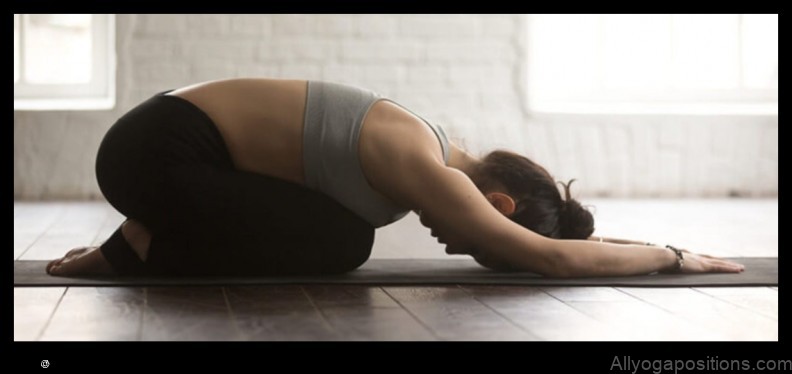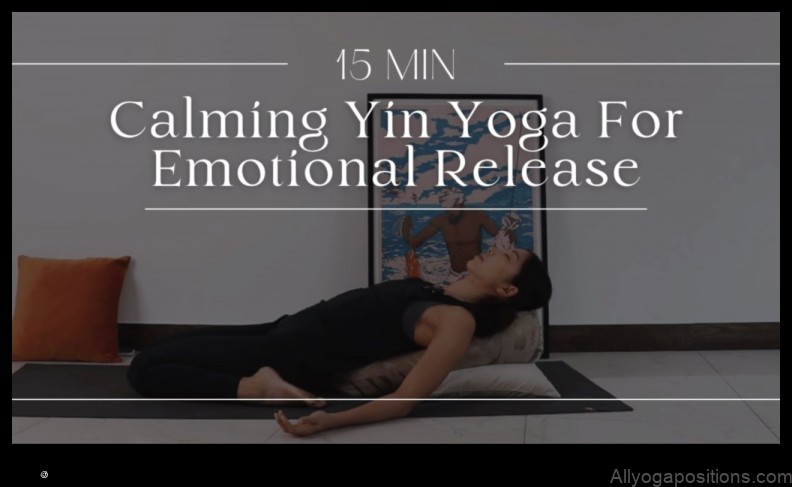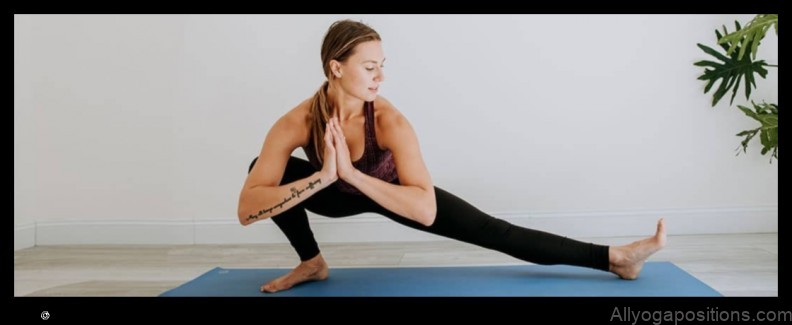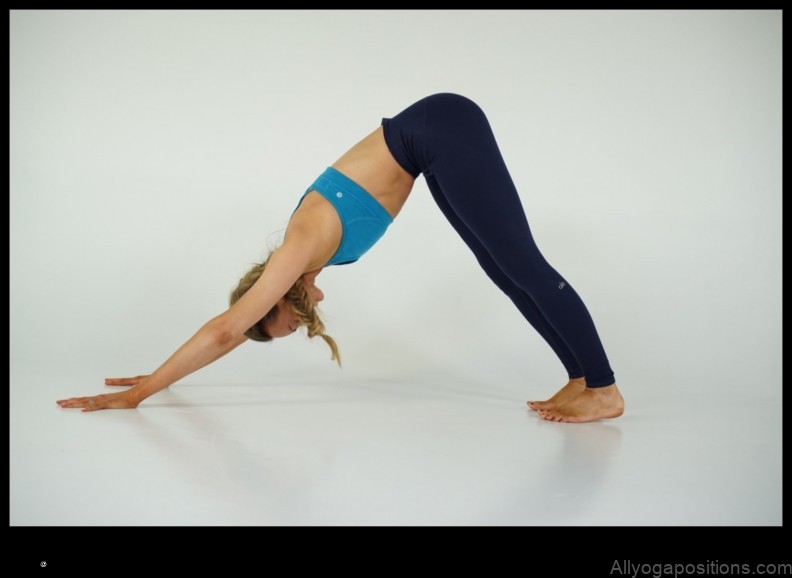
Yoga for Emotional Release: Journaling and Movement
Yoga and journaling are both powerful tools for emotional release. Yoga can help to calm the mind and body, while journaling can help to process emotions and gain insights. When combined, yoga and journaling can be a powerful way to manage stress, anxiety, and other difficult emotions.
This article will explore the benefits of yoga for emotional release, how to choose the right type of yoga for you, and how to practice yoga and journaling together.

Benefits of Yoga for Emotional Release
Yoga has been shown to have a number of benefits for emotional health, including:
- Reduced stress and anxiety
- Improved mood
- Increased self-awareness
- Enhanced relaxation
- Improved sleep
Yoga can help to reduce stress and anxiety by calming the mind and body. It can also help to improve mood by increasing serotonin and dopamine levels. Yoga can also help to increase self-awareness by helping people to connect with their bodies and minds. This can lead to a greater understanding of emotions and how to cope with them in a healthy way.
Yoga can also help to promote relaxation and improve sleep. When you practice yoga, you focus on your breath and body movements. This can help to quiet the mind and create a sense of calm. Yoga can also help to release tension in the body, which can lead to better sleep.
How to Choose the Right Type of Yoga for Emotional Release
There are many different types of yoga, and not all of them are created equal when it comes to emotional release. Some types of yoga are more physically demanding than others, and this can be counterproductive for people who are looking for a calming and relaxing experience.
If you are new to yoga, it is a good idea to start with a gentle type of yoga, such as hatha yoga or yin yoga. These types of yoga focus on slow, controlled movements and deep breathing. They are a great way to relax the body and mind, and they can also help to improve your flexibility and strength.
As you become more familiar with yoga, you may want to try different types of yoga to see what works best for you. Some other types of yoga that can be helpful for emotional release include:
- Vinyasa yoga
- Bikram yoga
- Ashtanga yoga
- Iyengar yoga
Ultimately, the best type of yoga for emotional release is the type that you enjoy the most and that helps you to feel relaxed and calm.

How to Practice Yoga and Journaling Together
Yoga and journaling can be a powerful combination for emotional release. When you practice yoga, you focus on your breath and body movements. This can help to quiet the mind and create a sense of calm. Journaling can help you to process your emotions and gain insights into yourself.
There are many different ways to practice yoga and journaling together. Here are a few ideas:
- Before you start your yoga practice, take a few minutes to write in your journal about what you are feeling. This can help you to focus on your intentions for the practice.
- During your yoga practice, pay attention to your breath and body sensations. Notice how you feel when you are in different poses. You can also use affirmations or mantras to help you focus on your breath and body.
- After your yoga practice, take a few minutes to write in your journal about your experience. You can write about what you learned, how you felt, and any insights you gained.
Yoga and journaling can be a powerful way to manage stress, anxiety, and other difficult emotions. By combining the physical and mental benefits of yoga with the emotional benefits of journaling, you can create a powerful tool for emotional release.

Common Mistakes to Avoid When Practicing Yoga for Emotional Release
When practicing yoga for emotional release, it is important to avoid making some common mistakes. These mistakes can make it difficult to achieve the benefits
| Topic | Features |
|---|---|
| Emotional release yoga | – Helps to relieve stress and anxiety |
| Yoga for stress relief | – Helps to improve mood and sleep |
| Journaling for emotional release | – Helps to process emotions and identify triggers |
| Yoga and journaling | – A powerful combination for emotional healing |
| Yoga poses for stress | – Help to relax the body and mind |
What is yoga for emotional release?
Yoga for emotional release is a type of yoga that focuses on helping people to release negative emotions and stress. It can be helpful for people who are struggling with anxiety, depression, or other mental health issues. Yoga for emotional release typically involves gentle movements, breathing exercises, and meditation.
3. What are the benefits of yoga for emotional release?
Yoga for emotional release can offer a number of benefits, including:
- Reduced stress and anxiety
- Improved mood
- Increased self-awareness
- Enhanced relaxation
- Improved sleep
- Reduced pain
- Enhanced flexibility
- Increased strength
- Improved balance
Yoga can also help to improve your overall sense of well-being and can help you to cope with stress and difficult emotions in a healthy way.
4. What are the different types of yoga for emotional release?
There are many different types of yoga that can be helpful for emotional release. Some of the most common types include:
- Yin yoga
- Restorative yoga
- Hatha yoga
- Vinyasa yoga
- Bikram yoga
Each type of yoga has its own unique benefits, and the best type for you will depend on your individual needs and preferences.
Yin yoga is a slow-paced and gentle form of yoga that focuses on stretching and releasing the deep connective tissues of the body. This type of yoga can be helpful for releasing tension and stress, and for calming the mind.
Restorative yoga is a type of yoga that is designed to promote deep relaxation and healing. This type of yoga typically involves lying or sitting in supported poses for extended periods of time. Restorative yoga can be helpful for reducing stress, anxiety, and fatigue.
Hatha yoga is a traditional form of yoga that combines physical postures, breathing exercises, and meditation. This type of yoga can be helpful for improving strength, flexibility, and balance, as well as for reducing stress and anxiety.
Vinyasa yoga is a dynamic and flowing form of yoga that combines breath-synchronized movement with yoga postures. This type of yoga can be challenging, but it can also be very energizing and uplifting. Vinyasa yoga can be helpful for improving flexibility, strength, and cardiovascular health, as well as for reducing stress and anxiety.
Bikram yoga is a type of yoga that is practiced in a heated room. This type of yoga can be challenging, but it can also be very detoxifying and invigorating. Bikram yoga can be helpful for improving flexibility, strength, and cardiovascular health, as well as for reducing stress and anxiety.
Ultimately, the best way to find out which type of yoga is right for you is to try a few different types and see what you enjoy the most.
5. How to choose the right type of yoga for emotional releaseThere are many different types of yoga, each with its own unique benefits. When choosing a yoga for emotional release class, it is important to find a style that feels right for you and that you will enjoy practicing. Some factors to consider when choosing a yoga style include:
- Your fitness level
- Your interests
- Your goals
- The availability of classes in your area
If you are new to yoga, it is a good idea to start with a gentle style such as hatha yoga or restorative yoga. These styles are designed to help you relax and connect with your body, and they are less likely to cause injury. As you become more experienced, you may want to try a more challenging style of yoga, such as vinyasa yoga or power yoga. These styles are more physically demanding, but they can also be very beneficial for emotional release.
Once you have chosen a yoga style, it is important to find a class that is taught by a qualified instructor. A good instructor will be able to help you modify the poses to meet your individual needs and will create a safe and supportive environment for emotional release.
If you are not sure where to find a yoga for emotional release class, you can ask your doctor, a local yoga studio, or a friend or family member for recommendations. You can also search online for yoga classes in your area.
6. How to practice yoga for emotional release at home
Yoga for emotional release can be practiced at home with or without the help of a teacher. If you are new to yoga, it is helpful to start with a beginner class or to work with a qualified teacher. However, you can also practice yoga for emotional release on your own by following these steps:
- Find a quiet place where you can practice yoga without distractions.
- Wear comfortable clothing that allows you to move freely.
- Turn off your phone and other electronic devices.
- Start by sitting in a comfortable seated position. Close your eyes and take a few deep breaths.
- Bring your attention to your body and notice how you are feeling. Notice any tension or tightness in your body.
- Begin to move your body slowly and gently. You can do simple yoga poses, such as cat-cow pose or child’s pose.
- As you move, focus on your breath and allow yourself to release any tension or stress that you are holding onto.
- When you are finished practicing yoga, take a few minutes to sit in silence and reflect on your experience.
7. What to expect during a yoga for emotional release class?
A yoga for emotional release class will typically involve a combination of yoga poses, breathing exercises, and journaling. The poses will be designed to help you relax and release tension, while the breathing exercises will help you to calm your mind and focus on your breath. The journaling will allow you to explore your emotions and process your feelings.
The class will typically begin with a brief introduction to the topic of emotional release. You will then be led through a series of yoga poses, breathing exercises, and journaling exercises. The class will end with a period of relaxation and meditation.
Yoga for emotional release can be a powerful tool for helping you to relieve stress and anxiety, and to process your emotions in a healthy way. If you are interested in learning more about yoga for emotional release, you can find classes at most yoga studios. You can also find resources online and in bookstores.
How to practice yoga for emotional release at homeYoga for emotional release can be practiced at home with or without the help of a teacher. If you are new to yoga, it is a good idea to start with a beginner class or to work with a qualified teacher. However, you can also practice yoga for emotional release on your own by following these steps:
- Choose a quiet and comfortable space where you will not be disturbed.
- Wear loose, comfortable clothing that will not restrict your movement.
- Turn off all distractions, such as your phone and computer.
- Light a candle or incense to create a relaxing atmosphere.
- Begin by sitting in a comfortable cross-legged position. Close your eyes and take a few deep breaths.
- Bring your attention to your body and notice how you are feeling.
- Start to move your body slowly and gently, paying attention to how each movement makes you feel.
- You may want to try some of the following yoga poses for emotional release:
- Child’s pose
- Cat/cow pose
- Seated forward bend
- Twisting poses
- Standing forward bend
- Bridge pose
- Savasana (corpse pose)
- Stay in each pose for a few breaths, or for as long as you feel comfortable.
- When you are finished, lie down in savasana and relax for a few minutes.
- Open your eyes and slowly come back to your normal awareness.
-
Don’t push yourself too hard. It is important to listen to your body and only do what feels comfortable. If you feel pain or discomfort, stop and rest.
-
Don’t compare yourself to others. Everyone is different and will experience yoga for emotional release in their own way. There is no right or wrong way to do it.
-
Don’t expect immediate results. Yoga for emotional release is a process. It takes time and practice to see results. Be patient and persistent with your practice.
-
Don’t give up. If you have a bad day, don’t let it discourage you. Just pick yourself up and try again the next day.
- Yoga A Mind, Body, and Soul Connection
- Meditation for Creativity Unlock Your Artistic Potential
- Meditation for Focus Sharpen Your Mind and Enhance Productivity
- Zen Zephyr Zenith Yoga for Peak TranquilityA Guide to Finding Inner Peace and Balance
- Easy Pose A Beginner-Friendly Yoga Pose for Relaxation and Stress Relief
Yoga for emotional release can be a powerful tool for helping you to manage stress, anxiety, and other difficult emotions. By practicing yoga regularly, you can learn to connect with your body and mind, and to express your emotions in a healthy way.
9. Common mistakes to avoid when practicing yoga for emotional release
When practicing yoga for emotional release, it is important to avoid making common mistakes that can hinder your progress. Here are a few tips to help you avoid these mistakes:
By avoiding these common mistakes, you can improve your experience of yoga for emotional release and get the most out of it.
FAQ
1. What is yoga for emotional release?
2. How does yoga help with emotional release?
3. What are the benefits of yoga for emotional release?
Table of Contents
